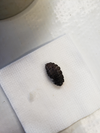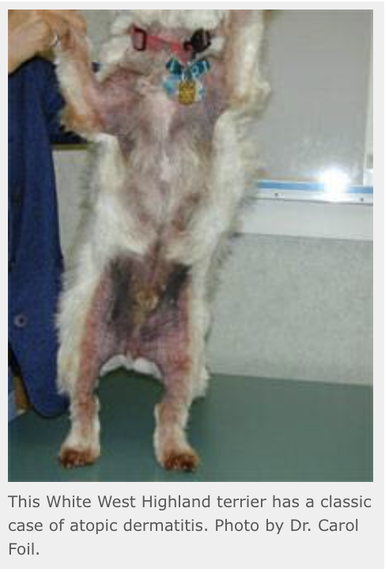|
Written by Tina Wismer, DVM, DABVT, DABT
The holiday season is upon us, and many people plan to include their furry companions in the festivities. As you gear up for the holidays, it is important to try to keep your pet's eating and exercise habits as close to their normal routine as possible. Also, please be sure to steer pets clear of the following unhealthy treats, toxic plants and dangerous decorations. Be Careful with Seasonal Plants and Decorations Oh, Christmas Tree: Securely anchor your Christmas tree so it doesn't tip and fall, causing possible injury to your pet. This will also prevent the tree water-- which may contain fertilizers that can cause stomach upset—from spilling. Stagnant tree water is a breeding ground for bacteria, and your pet could end up with nausea or diarrhea should he imbibe. Avoid Mistletoe & Holly: Holly, when ingested, can cause pets to suffer nausea, vomiting and diarrhea. Mistletoe can cause gastrointestinal upset and cardiovascular problems. And many varieties of lilies can cause kidney failure in cats if ingested. Opt for just-as-jolly artificial plants made from silk or plastic, or choose a pet-safe bouquet. Tinsel-less Town: Kitties love this sparkly, light-catching "toy" that's easy to bat around and carry in their mouths. But a nibble can lead to a swallow, which can lead to an obstructed digestive tract, severe vomiting, dehydration and possible surgery. It's best to brighten your boughs with something other than tinsel. That Holiday Glow: Don't leave lighted candles unattended. Pets may burn themselves or cause a fire if they knock candles over. Be sure to use appropriate candle holders, placed on a stable surface. And if you leave the room, put the candle out! Wired Up: Keep wires, batteries and glass or plastic ornaments out of paws' reach. A wire can deliver a potentially lethal electrical shock and a punctured battery can cause burns to the mouth and esophagus, while shards of breakable ornaments can damage your pet's mouth and digestive tract. Avoid Holiday Food Dangers Skip the Sweets: By now you know not to feed your pets chocolate and anything sweetened with xylitol, but do you know the lengths to which an enterprising pet will go to chomp on something yummy? Make sure to keep your pets away from the table and unattended plates of food, and be sure to secure the lids on garbage cans. Leave the Leftovers: Fatty, spicy and no-no human foods, as well as bones, should not be fed to your furry friends. Pets can join the festivities in other fun ways that won't lead to costly medical bills. Careful with Cocktails: If your celebration includes adult holiday beverages, be sure to place your unattended alcoholic drinks where pets cannot get to them. If ingested, your pet could become weak, ill and may even go into a coma, possibly resulting in death from respiratory failure. Selecting Special Treats: Looking to stuff your pet's stockings? Stick with chew toys that are basically indestructible, Kongs that can be stuffed with healthy foods or chew treats that are designed to be safely digestible. Long, stringy things are a feline's dream, but the most risky toys for cats involve ribbon, yarn and loose little parts that can get stuck in the intestines, often necessitating surgery. Surprise kitty with a new ball that's too big to swallow, a stuffed catnip toy or the interactive cat dancer. Plan a Pet-Safe Holiday Gathering House Rules: If your animal-loving guests would like to give your pets a little extra attention and exercise while you're busy tending to the party, ask them to feel free to start a nice play or petting session. Put the Meds Away: Make sure all of your medications are locked behind secure doors, and be sure to tell your guests to keep their meds zipped up and packed away, too. A Room of Their Own: Give your pet his own quiet space to retreat to—complete with fresh water and a place to snuggle. Shy pups and cats might want to hide out under a piece of furniture, in their carrying case or in a separate room away from the hubbub. New Year's Noise: As you count down to the new year, please keep in mind that strings of thrown confetti can get lodged in a cat's intestines, if ingested, perhaps necessitating surgery. Noisy poppers can terrify pets and cause possible damage to sensitive ears. And remember that many pets are also scared of fireworks, so be sure to secure them in a safe, escape-proof area as midnight approaches. Always Be Prepared! Your animal may become poisoned in spite of your best efforts to prevent it. You should keep telephone numbers for your veterinarian, a local emergency veterinary service, and the ASPCA Animal Poison Control Center (1-888-426-4435) in a convenient location. If you suspect that your pet has ingested something poisonous, seek medical attention immediately. Educational Resource Courtesy of: veterinarypartner.vin.com/doc/?id=6048033&pid=19239
1 Comment
Atopic dermatitis in dogs (allergic dermatitis, canine atopy) is a hypersensitivity or over-reaction to a variety of commonplace and otherwise harmless substances in the environment.These allergens include plant pollens, house dust mites, or mold spores. Occurrence Most allergic dogs begin to show signs between one and three years of age. Due to the hereditary nature of the disease, several breeds of dogs appear predisposed to allergies. These dog breeds include: Golden Retrievers, Labrador Retrievers, West Highland White Terriers and other terriers, and Bulldogs. However any dog, including mixed breed dogs, can have atopic dermatitis. Signs Atopic dogs will scratch, chew, lick, or rub areas of the body such as their paws, face, and rear end. They can have recurrent skin, ear, and anal gland inflammation and infections. This itchy behaviour, or pruritus, can cause hair loss and reddening and thickening of the skin. In some dogs, other causes can work with a dog’s allergies to cause itching. For example, parasites such as fleas or infection from bacteria or yeast can all worsen the level of itching from allergies. Therefore, it is important to treat any other health problems that could cause itching to manage your pet’s allergies. Diagnosis Once your pet’s veterinarian has diagnosed atopic dermatitis, allergy tests can be used to identify what a pet is allergic to in the environment. There are two types of allergy tests... SOURCE: This educational resource is courtesy of VeterinaryPartner.vin.com.
- There is growing concern that the parasite is becoming more established in Ontario (compared to a few years ago)
- This species of tapeworm has the potential to cause cysts in various parts of the body, particularly the liver, in dogs and people - this form of infection is called "alveolar echinococcus" - Dogs can pick up the parasite by eating contaminated wild canid feces (coyotes, foxes, etc) and small rodents - so dogs that eat feces and rodents would be considered higher risk for exposure - People are generally exposed to the parasite through contact with contaminated feces (from either a wild canid or their own dog, if it's been exposed) - The best way to prevent exposure is by preventing your dog from eating feces and scavenging on walks, and by carefully washing your hands after picking up your dog's stool - If you're concerned that your dog may be at risk of exposure, please feel free to call us to discuss a deworming protocol that will help minimize the risk of infection Here is a great article on the subject: https://www.wormsandgermsblog.com/2019/01/articles/animals/dogs/echinococcus-multilocularis-ontario-canada/  Cuterebriasis is a relatively common condition that results from the migration of fly larvae through the bodies of small mammals. A cuterebra is the larval stage of the bot fly, which is found in most regions of North America. Bot flies are large, non-feeding flies and they tend to target small mammals (mostly rodents, including rabbits) as a host for their larvae. Most cases in North America occur in the late summer/early fall. Bot flies will lay their eggs near the openings to small mammal burrows, so that when contact is made between the animal and the latent eggs, the eggs will hatch into larvae that will penetrate the skin, enter the body through an opening or be ingested. The life cycle of the fly requires migration through the soft tissue (muscle, fat, skin) of the animal, followed by a prolonged period of development to the maggot stage within a “warble” in the skin (a pocket created under the skin with a little air hole by the larva as it develops into a maggot). Once the maggot stage has been reached within the host, the maggot will “drop off” (i.e. exit the host) and will continue to develop in the ground over winter until it hatches into the mature botfly in the spring. The time period where the larvae matures to the maggot stage within its mammal host usually lasts anywhere from 3 to 7 weeks. Although the intended mammal hosts are wild rodents, rabbits, etc, these ectoparasites are commonly seen in our domestic cats and dogs who sniff areas where the eggs are latent or stick their heads in rodent holes. For this reason, cuterebra are commonly found on the face, neck or even within the nostrils of cats and dogs. Rarely, in cats, cuterebra migration can lead to a condition called feline ischemic encephalopathy, where the parasite can migrate to the brain and cause damage to the brain tissue. Clinical signs of cuterebras are usually limited to identification of a lump or hole in the skin where the cuterebra is located; however, larvae can migrate elsewhere in the body, including the brain (feline ischemic encephalopathy), pharynx/throat, nostrils and eyes/eyelids. In these cases, clinical signs would depend on the location affected. The most common finding is subcutaneous lesions, which result in a raised, red lump with a central hole that is usually about 0.5 cm in diameter. Cuterebra after extraction from its warble. Treatment of subcutaneous cuterebriasis is relatively simple. The most important aspect of treatment is removal of the larva/maggot. In most cases, the central hole must be enlarged to allow the larva/maggot to be removed without being ruptured, as rupturing the maggot can lead to anaphylaxis (a severe and potentially life threatening allergic reaction) in some animals. A secondary skin infection can sometimes occur, in which case antibiotics may be indicated. Source: www.mspca.org Written By: Dr.Amanda Lohin, DVM This year has already brought severe weather to parts of the globe. Heavy snow and strong winds hit the southern and northeastern United States in early January, while Australia has been experiencing record breaking temperatures leaving melted asphalt and massive bushfires, forcing many to leave their homes. Volcanic activity in Hawaii and earthquakes in Mexico and Papua New Guinea have also left many homeless.
With summer just around the corner, hurricane season has already begun with the first named Atlantic storm hitting the Gulf of Mexico area in late May, and over 300 tornadoes have been confirmed in the US so far this year. June marks National Pet Preparedness Month – a time to ensure that you are prepared for an emergency – not only for you, but your pets as well. The safety and survival of our pets lies solely on us, as pet owners, so take some time this week to make sure you have all the supplies you need for your pet in case you are faced with an emergency. The following are items you should have packed in a “pet emergency kit.” Have this kit ready to take with you in case of evacuation:
ALWAYS HAVE A BACK-UP PLAN. Be sure that a friend or neighbor has access to your home to retrieve your pet and emergency kit if you are unable to return home when an evacuation order is issued. Take a moment this weekend to prepare or update your pet’s emergency kit with all the vital necessities and come up with an emergency plan with your family that includes your pets. With any luck, you will not need the kit this summer, but it is better to be prepared – your pet is depending on you! LifeLearn Team | Lifelearn News |
|
|
CLINIC HOURS: Monday - Friday: 8am - 6pm Saturday & Sunday: Closed For after-hours care or emergencies please contact: Campus Estates Animal Hospital (519-837-1214); or Emergency Veterinary Clinic of Waterloo (519-650-1617) |




